Friday, August 10, 2007
Food Allergy Article
My father found this article online recently and I wanted to share it here. Recently we had some issues within our family where Kayla was not welcome because of her food allergy. I will not be getting into that here, but it shows how important it is to get as much information on food allergies out there as we can.
Although Kayla does not have a peanut allergy (as far as we know), you could replace peanut everywhere in this article and put dairy in it's place. And regardless, it is a good article about food allergies and most importantly, it states in it that parents of non allergic kids are those that need to be reached. Some of the examples of parental ignorance is quite scary. These are excellent examples of why I am terrified to send Kayla to preschool in a few weeks.
I am always happy to see articles giving attention to the dangers of food allergies. I'm copying the article below, but you can also view it on-line here.
***
Trivializing Peanut Allergies Could Mean Tragedy
Wednesday, August 08, 2007
Ezra started talking in sentences right around his second birthday.
And not a moment too soon, considering complete sentences are essential for him to convey critical information that everyone he meets needs to know.
Last weekend, for example, during a family gathering at his grandparents' home, he made a point of visiting each adult to say, "I'm al lergic to peanuts and peanut butter and everything with nuts."
I don't have to tell you this is hardly a sentence that trips readily off the tongue of a 2-year-old. Quite obviously, Ezra has been coached to provide this information by his mother.
It became an essential sentence, however, after a visit to the emergency room where his allergy was discovered.
Ezra had been enjoying a play date and lunch at a friend's home, where the main course was a pea nut butter sandwich -- Ezra's first, it turned out.
Mercifully, his reaction was mild. But that's frequently the case with an initial allergic reaction. Testing revealed Ezra's allergy is extreme, which means repeated ex posure to peanuts would result in increasingly severe reactions. Even one more exposure could send him into anaphylactic shock in which breathing is severely impaired. Without immediate treatment, he could die.
I am not relating this, by the way, to provide information to parents of kids with food allergies, who know far more than the rest of us will ever know about this subject.
No, the people who need to know this message are parents whose kids don't have food aller gies, and teachers who think parents who demand a peanut-free environment in the classroom are being overly protective. Unfortunately, a wealth of anecdotal evi dence suggests a lot of people still don't realize the seriousness of pea nut allergies.
Many day care centers have declared their premises "peanut free," which means no child is permitted to bring a peanut butter sandwich. Given that PB&J is a childhood staple, that may seem harsh -- until you realize that for many pea nut-allergic children, merely touching a lunchbox that was handled by someone who made a peanut butter sandwich could trigger a se rious reaction.
That's why parents of peanut-allergic children are so relentless in their efforts to spread the word.
Yet many parents and teachers, even after hearing this, remain cavalier toward peanut-allergic children and their parents.
One illustrative anecdote involves a peanut-free day care center where an aide spotted a peanut butter and jelly sandwich in the hands of a 4-year-old. Turns out the mother had been making her child's sandwiches with a 2-inch circle of peanut butter in the middle, then surrounding it with jelly to hide the peanut butter.
When told her child could not remain in the program if she didn't abide by the school's rules, she re plied that her child's rights were being subverted by "this peanut al lergy nonsense."
Unfortunately, parents with such attitudes can convey them to their children, thus fostering a ten dency to tease the allergic child. In another few years, the smiles and compliance that Ezra encounters today when he announces his al lergy may change to peer scoffing, teasing and harassment ("Ha, ha, you're the peanut kid!").
Exaggeration? Tell that to the 7-year-old St. Louis girl who had to be hospitalized for two days after having crumbled peanut butter crackers dumped on her head by a boy on her school bus who was harassing her about her allergy.
A peanut allergy goes beyond being a mere nuisance. Not only does it require a family to be relentlessly vigilant, but it requires that parents look everywhere for traces of peanuts. At least one fast-food chain uses peanut oil for its fried foods. Some skin creams and oils contain peanut oil.
Even reading labels is no guarantee, as a list of ingredients may say "arachis oil," the botanical name for the genus that includes peanuts.
Researchers have spent years trying to neutralize peanut allergies or at least mitigate their impact. Vaccines are being tested, a Duke Medical Center study is exploring the reliability of desensitization and early results of tests involving Chinese herbal formulas are said to be promising.
But meanwhile, peanut allergies continue to affect 3 million Americans, or 1 percent of the population -- and 3 percent of the preschool population.
So until science cracks the code, Ezra and his fellow peanut-allergic children must depend on the understanding and cooperation of all the adults in their lives.
***
Although Kayla does not have a peanut allergy (as far as we know), you could replace peanut everywhere in this article and put dairy in it's place. And regardless, it is a good article about food allergies and most importantly, it states in it that parents of non allergic kids are those that need to be reached. Some of the examples of parental ignorance is quite scary. These are excellent examples of why I am terrified to send Kayla to preschool in a few weeks.
I am always happy to see articles giving attention to the dangers of food allergies. I'm copying the article below, but you can also view it on-line here.
***
Trivializing Peanut Allergies Could Mean Tragedy
Wednesday, August 08, 2007
Ezra started talking in sentences right around his second birthday.
And not a moment too soon, considering complete sentences are essential for him to convey critical information that everyone he meets needs to know.
Last weekend, for example, during a family gathering at his grandparents' home, he made a point of visiting each adult to say, "I'm al lergic to peanuts and peanut butter and everything with nuts."
I don't have to tell you this is hardly a sentence that trips readily off the tongue of a 2-year-old. Quite obviously, Ezra has been coached to provide this information by his mother.
It became an essential sentence, however, after a visit to the emergency room where his allergy was discovered.
Ezra had been enjoying a play date and lunch at a friend's home, where the main course was a pea nut butter sandwich -- Ezra's first, it turned out.
Mercifully, his reaction was mild. But that's frequently the case with an initial allergic reaction. Testing revealed Ezra's allergy is extreme, which means repeated ex posure to peanuts would result in increasingly severe reactions. Even one more exposure could send him into anaphylactic shock in which breathing is severely impaired. Without immediate treatment, he could die.
I am not relating this, by the way, to provide information to parents of kids with food allergies, who know far more than the rest of us will ever know about this subject.
No, the people who need to know this message are parents whose kids don't have food aller gies, and teachers who think parents who demand a peanut-free environment in the classroom are being overly protective. Unfortunately, a wealth of anecdotal evi dence suggests a lot of people still don't realize the seriousness of pea nut allergies.
Many day care centers have declared their premises "peanut free," which means no child is permitted to bring a peanut butter sandwich. Given that PB&J is a childhood staple, that may seem harsh -- until you realize that for many pea nut-allergic children, merely touching a lunchbox that was handled by someone who made a peanut butter sandwich could trigger a se rious reaction.
That's why parents of peanut-allergic children are so relentless in their efforts to spread the word.
Yet many parents and teachers, even after hearing this, remain cavalier toward peanut-allergic children and their parents.
One illustrative anecdote involves a peanut-free day care center where an aide spotted a peanut butter and jelly sandwich in the hands of a 4-year-old. Turns out the mother had been making her child's sandwiches with a 2-inch circle of peanut butter in the middle, then surrounding it with jelly to hide the peanut butter.
When told her child could not remain in the program if she didn't abide by the school's rules, she re plied that her child's rights were being subverted by "this peanut al lergy nonsense."
Unfortunately, parents with such attitudes can convey them to their children, thus fostering a ten dency to tease the allergic child. In another few years, the smiles and compliance that Ezra encounters today when he announces his al lergy may change to peer scoffing, teasing and harassment ("Ha, ha, you're the peanut kid!").
Exaggeration? Tell that to the 7-year-old St. Louis girl who had to be hospitalized for two days after having crumbled peanut butter crackers dumped on her head by a boy on her school bus who was harassing her about her allergy.
A peanut allergy goes beyond being a mere nuisance. Not only does it require a family to be relentlessly vigilant, but it requires that parents look everywhere for traces of peanuts. At least one fast-food chain uses peanut oil for its fried foods. Some skin creams and oils contain peanut oil.
Even reading labels is no guarantee, as a list of ingredients may say "arachis oil," the botanical name for the genus that includes peanuts.
Researchers have spent years trying to neutralize peanut allergies or at least mitigate their impact. Vaccines are being tested, a Duke Medical Center study is exploring the reliability of desensitization and early results of tests involving Chinese herbal formulas are said to be promising.
But meanwhile, peanut allergies continue to affect 3 million Americans, or 1 percent of the population -- and 3 percent of the preschool population.
So until science cracks the code, Ezra and his fellow peanut-allergic children must depend on the understanding and cooperation of all the adults in their lives.
***


 Name:
Name:


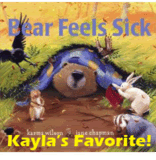
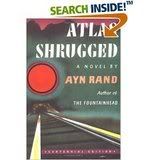
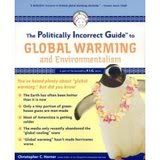







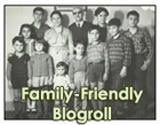

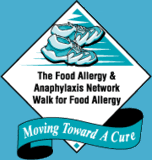

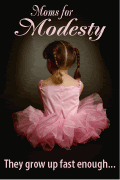




2 Comments:
It makes me so mad to read that she put a 2" circle of peanut butter surrounded by jelly. What was the purpose of that? She just didn't want to be "told" what to do. We have family like that. They are getting better, but they still aren't there yet. SO FRUSTRATING!!!!! We went to an amusement park yesterday and the lack of knowledge about food allergies there was very frustrating too. I'll share that story later in the week. Did you meet with the preschool yesterday? How did it go?
How sad that you had some family events where Kayla wasn't welcome just because of her food allergies! She's still family for crying out loud! I can't believe people would be that way.
Post a Comment
<< Home